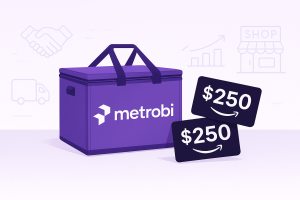Food brings people together, influenced by changing consumer preferences. But today’s catering menus are not just about serving food – it’s about creating experiences that guests remember, reflecting exciting event catering trends in the industry. As 2025 unfolds, business owners face a rapidly changing catering landscape where yesterday’s standards no longer satisfy today’s clients and the latest trends are constantly emerging.
The truth? Most business owners and event planners are still following outdated catering practices while ignoring the catering trends for catered events that are emerging.
Did you know that 78% of event attendees now consider the catering experience as important as the event itself? This shift has forced successful businesses to completely rethink their approach to food service in light of exciting trends in catering.
From sustainable practices to technology integration, the rules of food service are being rewritten. Business owners who understand these changes and implement green practices, including functional foods, aren’t just surviving – they’re thriving by turning interactive food stations into memorable moments that strengthen client relationships and boost their brand.
The good news is that staying ahead doesn’t require a complete overhaul of your business model. Small, strategic adjustments can position you at the forefront of these trends, with just a few examples of effective adjustments.
But there’s a catch: these adjustments need to be the right ones, providing guests with the experience they desire.
What if you could predict which catering trends will matter to your bottom line in 2025? What if you could implement changes today that put you ahead of competitors still stuck in 2023’s mindset?
In this guide, we’ll walk through the essential catering trends that are reshaping the industry. No fluff, no unnecessary details – just practical insights that help you make smart decisions for your business.
Are you ready to transform how you think about catering in 2025?
The Global Catering Market
The global catering market is projected to reach $124 billion in the US alone by 2032, growing at a CAGR of 6.2% from now, showing strong long-term business potential
Boost customer satisfaction with just a few clicks
Most-Loved Features:
- On-demand drivers
- Real-time GPS tracking
- Delivery confirmation photos
- Over 50% of customers report a smoother delivery experience
Understanding Sustainable Catering Practices
Sustainable catering reduces food waste by up to 50% using AI tools
Local ingredient sourcing cuts carbon footprint while supporting regional economies
Eco-friendly packaging appeals to environmentally conscious clients despite higher upfront costs
Reducing Food Waste
Food waste represents a significant challenge in the catering industry. In 2025, forward-thinking caterers are implementing systematic approaches to waste reduction in their catering menus that benefit both their bottom line and local businesses’ environmental impact.
The most effective strategy starts with precise inventory management systems that track ingredients from purchase to plate. These systems allow catering businesses to order exactly what they need, use ingredients before they spoil, and include strategies for donating excess food, ensuring that delicious food reaches those in need.
Portion control has become a science rather than an afterthought. Caterers now use data from past events to predict exactly how much food different demographics consume at various event types to better serve diverse audiences. This prevents over-preparation while ensuring guests with dietary preferences, including those who prefer finger foods, don’t leave hungry.
When food remains after an event, many caterers have established partnerships with food rescue organizations and local farms to ensure sustainability. These partnerships redirect edible leftovers to shelters and food banks, keeping good food out of landfills while serving communities in need.
The technology revolution has reached food waste management and beverage trends as well. The Winnow Vision AI system, used in over 2,500 catering facilities worldwide, has achieved up to a 50% reduction in food waste within the first year of adoption.
This eco-friendly catering system uses cameras and smart scales to identify and measure wasted food, providing detailed reports that help kitchens adjust purchasing and preparation. Apps like FoodCloud and Too Good To Go further extend these efforts by connecting caterers with consumers willing to purchase surplus food at reduced prices.
The Role of Technology in Catering
Technology plays a critical role: 75% of catering orders are placed online, and 30% of enterprise restaurants have adopted order management systems to improve efficiency
“Food waste represents between 8 to 10 percent of global greenhouse gas emissions, contributing to an unstable climate and extreme weather events such as droughts and flooding, particularly for catering services committed to sustainability and health-conscious practices .” This environmental impact makes waste reduction not just cost-effective but also important for comfort foods for caterers committed to sustainability and health-conscious practices.
Financial Benefits of Waste Reduction
The financial case for waste reduction is compelling. Caterers who implement comprehensive waste reduction programs typically see food costs decrease by 2-6%. This happens through several mechanisms:
Reduced purchasing needs as inventory management improves
Lower disposal costs as less food ends up in dumpsters
New revenue streams from selling items that would otherwise be discarded
Marketing advantages as clients increasingly seek environmentally responsible vendors
For a mid-sized catering operation, these savings can translate to thousands of dollars monthly while simultaneously reducing their carbon footprint.
Sourcing Local Ingredients
The demand for locally-sourced ingredients has evolved from a niche preference to a mainstream expectation in 2025’s catering landscape, heavily influenced by seasonal ingredients. This shift stems from both environmental concerns and a growing appreciation for event catering that emphasizes global flavors and regional food identities. Local sourcing reduces transportation distances dramatically—the average ingredient in a conventional catered meal travels over 1,500 miles from farm to plate, while locally-sourced items typically travel under 100 miles.
Regional food ecosystems benefit significantly from this approach. When caterers commit to local purchasing, they create reliable markets for small and mid-sized farms. This economic stability allows these producers to maintain sustainable farming practices that might otherwise be financially unviable. The result is a virtuous cycle where environmental stewardship becomes economically rewarding.
The concept of “food miles” has gained traction among consumers who understand that shorter transportation distances mean lower carbon emissions. Europe leads this movement, representing 31.35% of the global sustainable catering market revenue in 2025. European regulations increasingly require caterers to disclose their sourcing practices and carbon footprints, creating market incentives for local purchasing.
Menu Development with Local Ingredients
Seasonal menu planning has become essential for caterers committed to local sourcing. Rather than offering the same dishes year-round, menus now follow natural growing cycles. This approach creates several advantages:
Ingredients are fresher and more flavorful when harvested at peak ripeness
Seasonal changes create a natural menu variety that keeps returning clients engaged
Working within seasonal constraints forces creative menu development
Storytelling opportunities emerge when dishes connect to local food traditions
Many caterers now maintain relationships with multiple small producers rather than relying on a single large distributor. While this creates logistical challenges, it also provides resilience—if one farm experiences crop failure, others can fill the gap. These direct relationships also allow caterers to request specific varieties grown for particular flavor profiles rather than accepting standardized commercial options.
Eco-friendly Packaging
The shift toward biodegradable packaging represents one of the most visible sustainability transformations in catering. Traditional disposable catering items—plastic cups, polystyrene containers, and petroleum-based wraps—create significant waste streams that persist in landfills for decades or centuries. In contrast, today’s leading caterers use materials that decompose naturally within months, often paired with modern flair.
These eco-friendly alternatives fall into several categories. Plant-based plastics derived from corn, sugarcane, or cassava provide functionality similar to conventional plastics but break down in commercial composting facilities. Paper products from sustainably managed forests offer another option, particularly when treated with plant-based rather than petroleum-based coatings. Some caterers have even returned to traditional materials like banana leaves or bamboo, which require minimal processing and decompose rapidly after use.
Eco-Friendly Catering
Sustainability is a key trend, with 43% of customers prioritizing eco-friendly catering options and 20% of caterers actively pursuing zero-waste initiatives and sustainable packaging.
Cost Considerations of Sustainable Packaging
The financial implications of eco-friendly packaging require careful analysis. Sustainable options typically cost 15-30% more than conventional alternatives when comparing per-unit prices. However, this simplistic comparison overlooks several factors that influence the true cost difference:
Waste disposal costs decrease when materials are compostable rather than landfill-bound
Bulk purchasing and long-term supplier relationships can reduce price premiums
Clients increasingly expect sustainable packaging and may pay premium prices to caterers who provide it
Regulatory changes in many regions now tax or ban conventional single-use items, changing the cost equation
For caterers concerned about cost increases, a phased approach often works best. Starting with the most visible items—like serving plates and utensils—provides immediate brand benefits while allowing time to adjust pricing structures for the added costs of less visible packaging like kitchen wraps and storage containers.
Energy-Efficient Catering Operations
Energy consumption represents a significant portion of catering’s environmental footprint. Progressive catering operations now audit their energy use systematically and implement targeted efficiency measures. This starts with the kitchen equipment itself—energy-efficient refrigeration, induction cooking, and smart ventilation systems can reduce energy consumption by 30-40% compared to older equipment.
Transportation energy use presents another opportunity for improvement. Catering fleets increasingly include electric vehicles for local deliveries and hybrid options for longer distances. Route optimization software ensures these vehicles take the most efficient paths between multiple event locations. Some caterers even use cargo e-bikes for urban deliveries, eliminating fossil fuel use while avoiding traffic congestion.
On-site energy management has also evolved. Portable induction burners have largely replaced traditional chafing dishes with Sterno fuel, eliminating both fire hazards and disposable fuel containers. LED lighting has become standard for event illumination, using a fraction of the energy required by older lighting technologies while providing more control over atmosphere and color.
Renewable Energy Integration
Forward-thinking caterers now incorporate renewable energy into their operations. Solar panels on commissary kitchens provide clean electricity during daylight hours when most food preparation occurs. Some have even invested in biodigesters that convert food waste into methane for cooking, creating a closed-loop system that reduces both waste and energy costs.
For mobile catering operations, battery storage technology has advanced significantly, allowing food trucks and outdoor event setups to operate on stored solar energy rather than diesel generators. These systems can now power refrigeration, cooking equipment, and point-of-sale systems through entire service periods without fossil fuel backup.
The financial returns on these investments vary widely depending on local energy costs, available subsidies, and equipment choices. However, the long-term trend favors renewable systems as their costs continue to decline while fossil fuel prices remain volatile.
Water Conservation Strategies
Water represents a critical but often overlooked aspect of sustainable catering. Commercial kitchens traditionally use enormous water volumes for food preparation, cooking, cleaning, and ice production. Today’s sustainable operations implement comprehensive water management systems that reduce consumption while maintaining hygiene standards.
Low-flow pre-rinse spray valves represent a simple starting point, reducing water use at dish stations by up to 70% while improving cleaning effectiveness through higher pressure. Water-efficient dishwashers further reduce consumption, with the newest models using as little as 0.8 gallons per rack compared to 1.5-2 gallons in older machines.
Food preparation techniques have also evolved to conserve water. Steam cooking has largely replaced boiling for many vegetables, using a fraction of the water while better preserving nutrients and texture. Thawing practices now favor refrigeration rather than running water, eliminating a significant source of waste.
For outdoor events, waterless hand sanitizing stations complement or replace traditional handwashing facilities, dramatically reducing water transport needs and wastewater management challenges. This approach maintains hygiene standards while eliminating the need for water delivery and grey water removal from remote locations.
Embracing Personalized Menu Trends
Customizable food stations create unique dining experiences while addressing dietary restrictions.
Themed events boost engagement through immersive culinary storytelling
Interactive dining increases guest satisfaction by providing entertainment and personalization
Customizable Food Stations
Customizable food stations have transformed the catering landscape by giving guests control over their dining experience. These stations feature a variety of ingredients and preparation methods where guests can build their meals according to their preferences, including grazing tables. Unlike traditional buffets with pre-made dishes, these stations often include chefs who prepare items on demand, ensuring freshness and personalization.
Food stations excel at accommodating various dietary restrictions without making guests feel isolated. Instead of segregating those with special diets, these stations allow everyone to participate in the same dining experience while making choices that suit their needs.
Plant-Based and Vegan Menus in Catering Services
Plant-based and vegan menus are increasingly popular, making up about 22% of catering orders as businesses respond to health and environmental concerns.
Profit Potential of Customizable Stations
When considering profitability in catering, customizable food stations consistently rank among the top performers. The average profit margin for specialized food stations ranges from 25-35%, compared to the industry standard of 10-15% for traditional catering services. This higher margin stems from several factors: the perceived value of personalization, the ability to charge premium prices for interactive experiences, and reduced food waste since items are prepared on demand.
Corporate events particularly benefit from these stations, with companies willing to pay 15-20% more for personalized dining options that accommodate all employees. Dr. Elena Rodriguez, hospitality management professor at Cornell University, notes: “Interactive food stations… allow guests to interact with chefs and customize their meals. This trend not only elevates the dining experience through family-style serving but also adds an element of entertainment to events.” This combination of dining and entertainment justifies the premium pricing structure that drives profitability.
Themed Catering Events Or Corporate Events
Themed catering events create immersive dining experiences that transport guests beyond the typical meal service, creating a memorable atmosphere. These events align food, décor, presentation, and sometimes entertainment around a central concept or story. Popular themes for 2025 include regional cuisine explorations, historical era dining experiences, and cultural celebrations that offer authentic culinary journeys.
Global cuisine themes continue to dominate the market, with Mediterranean, Pan-Asian, and Latin fusion concepts leading client requests. The appeal lies in their ability to create a cohesive experience rather than merely serving food. For corporate clients, themed events offer team-building opportunities as colleagues share new culinary experiences, reflecting contemporary dining trends and event catering trends. For social events, themes provide a memorable backdrop that guests discuss long after the event ends.
Seasonal themes also show strong performance, with farm-to-table harvest celebrations in fall and global street food festivals in summer ranking among the most requested options. Data from event planning platform Triple Seat shows that themed events receive 28% more social media mentions than standard catering, providing additional marketing value for both caterers and clients.
Engagement Through Themed Experiences
Themes drive engagement by creating multi-sensory experiences that stimulate conversation and participation. When guests encounter unfamiliar foods presented as just food within an engaging context, they’re more likely to try new things and interact with other attendees. This social dynamic creates a more successful event overall, regardless of whether it’s a corporate function or private celebration.
The storytelling aspect of themed catering also creates emotional connections. When a chef explains the historical significance of a dish or its cultural importance, guests gain appreciation beyond taste alone. This educational component elevates the perceived value of the experience and justifies premium pricing. Themed events with storytelling elements command 15-25% higher per-person pricing than standard catering, according to industry pricing analysis.
Interactive Dining Experiences
Interactive dining experiences take personalization a step further by actively involving guests in the food preparation or serving process. These experiences range from chef demonstration stations where guests watch their meals being prepared to DIY food assembly bars where they participate directly. Examples include build-your-own poke bowls, personalized pasta stations, or chef-guided tastings with paired beverages.
The psychological impact of interactive dining creates higher satisfaction levels. When guests participate in creating their meal, they develop a sense of ownership that enhances their enjoyment. This concept, known as the “IKEA effect” in behavioral economics, applies directly to food experiences—people value what they help create.
For business owners, interactive dining provides a dual benefit: higher guest satisfaction and operational efficiency. Many interactive stations require fewer staff members than traditional service methods while creating a more memorable experience. The labor savings can reach 15-20% compared to full-service plated meals, while guest satisfaction scores average 30% higher.
Customer Satisfaction Enhancement
Interactive dining directly correlates with increased customer satisfaction through several mechanisms. First, it provides entertainment value alongside nutritional value. When guests watch a chef flame a dessert or learn to fold a dumpling themselves, they receive both a meal and an activity. This combination creates a better value perception for potential customers.
Second, the social aspect of interactive dining breaks down barriers between guests. Strangers at corporate events find natural conversation starters when participating in shared food activities. This community-building aspect is particularly valuable for networking events and team-building functions.
Customer Relationship Management (CRM) Software
Customer Relationship Management (CRM) software adoption in catering businesses has resulted in revenue boosts of around 41%, evidencing the value of technology integration.
Micro-Catering and Small-Batch Specialization
Micro-catering—focusing on smaller, more intimate events with highly specialized menus—has emerged as one of the most profitable niches in the industry. This approach allows caterers to deliver exceptional quality and attention to detail that larger operations struggle to match. The profit margins for micro-catering often exceed 40%, compared to 10-15% for traditional high-volume catering.
Small-batch specialization works by focusing on specific culinary strengths rather than trying to please everyone. A caterer might become known for authentic regional Italian cuisine, artisanal desserts, or specialized dietary options like paleo or keto-friendly meals. This specialization allows for premium pricing while reducing inventory complexity and waste.
The micro-catering model particularly benefits from word-of-mouth marketing and social sharing. When guests experience exceptional quality and uniqueness, they become ambassadors for the service. The cost of customer acquisition drops significantly with this model, further improving profitability. Data shows that specialized caterers spend 40% less on marketing than general caterers while maintaining fuller booking calendars.
Building a Profitable Specialty Niche
Creating a profitable specialty niche requires identifying underserved markets within your region. Analyze local demographics, dietary trends, and cultural preferences to find gaps in catering offerings. For example, authentic regional cuisines often lack proper representation, creating opportunities for knowledgeable caterers.
The specialized approach also allows for building relationships with specific ingredient suppliers for diverse cuisines, potentially securing better pricing and quality. This vertical integration improves both profitability and product consistency. For example, a caterer specializing in Mediterranean cuisine might develop direct relationships with olive oil producers and specialty cheese makers, securing both better pricing and unique products that competitors can’t access.
Dietary-Focused Menu Development
Dietary-focused menu development has evolved from simply offering vegetarian options to creating comprehensive approaches for various dietary requirements, including dairy-free options. The most profitable catering businesses now build their entire menu development process around inclusive menus a dietary flexibility, treating restrictions not as challenges but as opportunities for creativity.
The key to profitability in dietary-focused catering lies in smart recipe development that maximizes ingredient crossover while meeting various requirements. For example, developing dishes that are naturally gluten-free rather than modified versions of standard recipes results in both better taste and operational efficiency. This approach reduces inventory complexity while improving guest satisfaction.
Balancing Dietary Options with Profitability
Balancing diverse dietary offerings with business profitability requires strategic menu engineering. The most successful caterers develop core recipes that can be easily modified to meet different requirements without requiring entirely separate production processes. This modular approach maintains efficiency while meeting client expectations.
Technology now plays a crucial role in managing dietary information and preventing errors. Advanced catering management software allows for detailed tracking of ingredients, allergens, and dietary classifications. This precision reduces both risk and waste while improving the guest experience. The investment in such systems typically pays for itself within 6-12 months through improved operational efficiency and reduced errors.
From a business perspective, catering companies that excel at dietary accommodation report an average of 28% higher client satisfaction scores and 18% better referral rates than those that treat special diets as an afterthought. This improved client experience directly translates to better retention and word-of-mouth marketing, reducing customer acquisition costs over time.
Trends In Catering

As we look ahead to 2025, the catering industry is constantly evolving and clearly shifting toward exciting catering trends and new trends such as sustainability and global flavors. Such as sustainability, personalization, technology integration, and health-conscious options. Business owners who adapt to these trends in catering will not only meet customer expectations but also gain a competitive edge by staying ahead. By reducing food waste, offering customizable stations, embracing digital tools, and expanding healthy menu options according to the rising trend, you’re positioning your business for long-term success.
The future of catering isn’t just about serving food—it’s about creating experiences that align with your clients’ values and preferences. Whether you’re implementing eco-friendly packaging, incorporating international flavors, or setting up interactive dining experiences, these changes reflect the art of catering services that align with what today’s customers want.
Corporate Catering
Corporate catering dominates the market, accounting for approximately 60% of total demand, with nearly half of caterers (48%) reporting corporate events as their largest growth area
Remember that staying current with these trends isn’t optional—it’s essential for business growth. You can start by choosing one area to improve as a catering business owner, gathering feedback, and continuing to refine your approach. The catering businesses that thrive will be those that listen carefully and respond thoughtfully to changing demands.
Your next step? Evaluate your current offerings against these trends and identify where you can make meaningful improvements that will resonate with your specific clientele. To streamline your operations and stay competitive, consider integrating modern catering management solutions. These tools can help you customize menus, manage orders efficiently, and enhance customer engagement. For small businesses looking to upgrade their systems, exploring the best catering software options is a smart move to optimize workflows and boost profitability.














